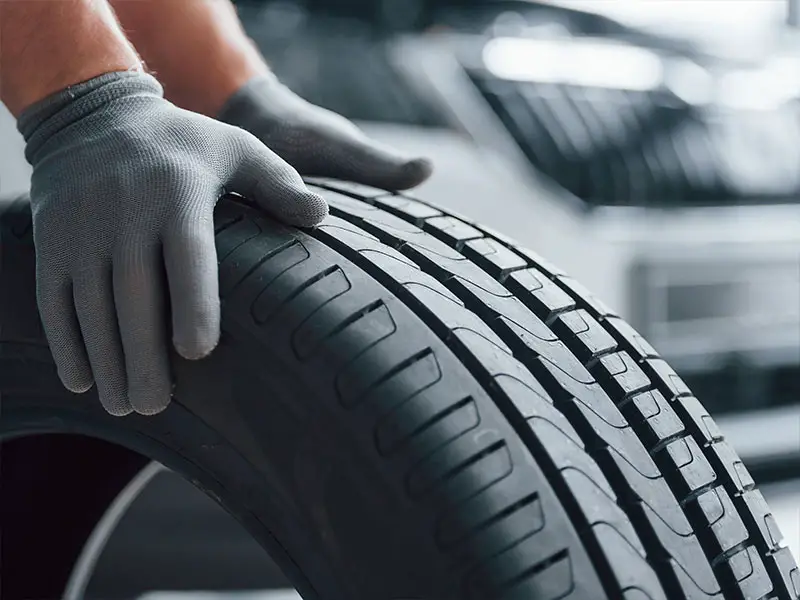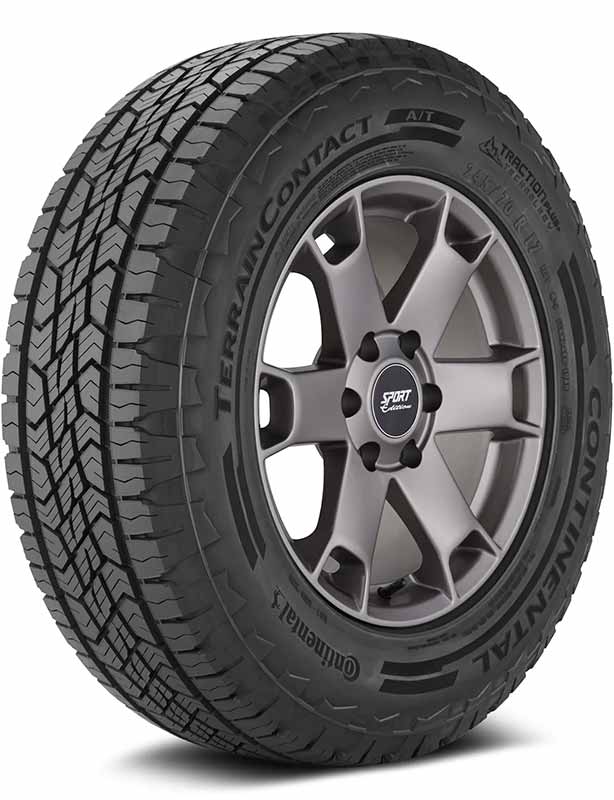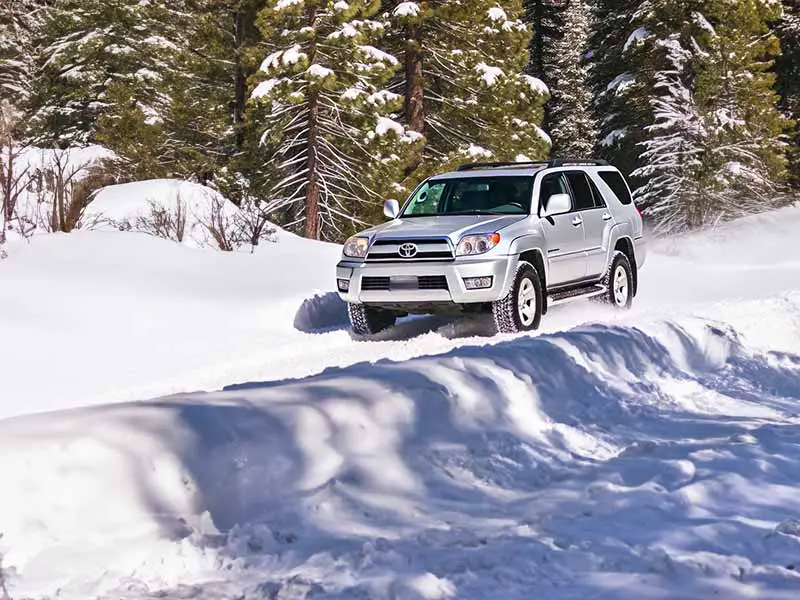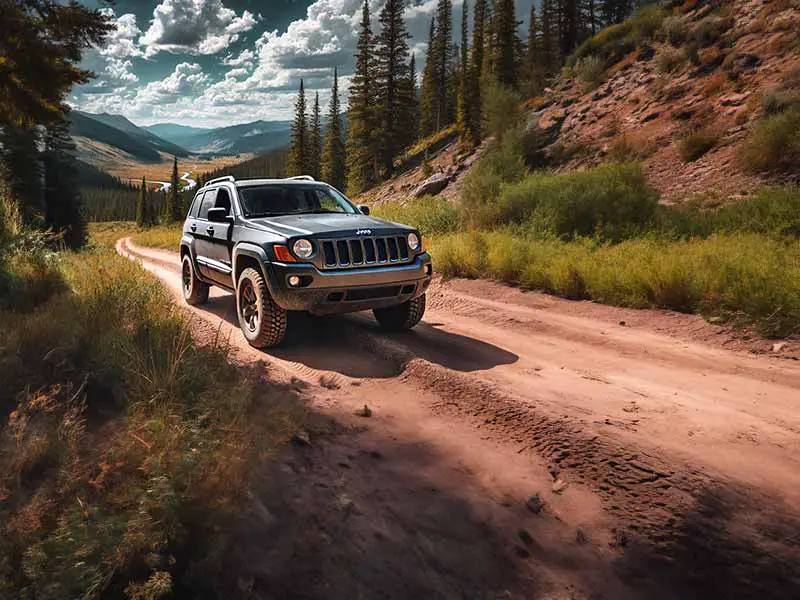Modern radial tires used on passenger cars and light trucks are surprisingly complex. In this article we’ll break down all the parts of a tire. We’ll also go over the main elements of a typical tire tread. Last, we’ll explain all of the letters, numbers, and designations on a tire sidewall.
Keep reading for an in-depth guide to tire construction and design.
Parts Of A Radial Tire
RADIAL TIRE CUTAWAY DIAGRAM
The following is a list of the major parts of a tire.
Sidewall
The sidewall of a tire is the part that we most often see as we walk up to our car or truck. It is the part that (with the help of air pressure) holds the vehicle up. The sidewall is critical for ride comfort but also plays a role in grip.
Low profile tires (tires with a short sidewall) have a harsher ride due to the lack of height able to absorb bumps and rough roads. The benefit of a low profile tire however is the lack of flex helps keep the tire tread in better contact with the road.
Shoulder
The shoulder is the area where the sidewall of the tire meets the tire tread. The shoulder contains tread grooves that allow it to remove water from beneath the tire and push it out and to the side of your car or truck.
Tire shoulders tend to take a lot of abuse as it is the outer and inner-most portion of the tire and it comes into contact with the road. Under inflation or alignment can cause accelerated wear in this portion of the tread.
When a tire is punctured in the shoulder area it can not be patched. The steel belts do not extend to the shoulder of the tire and therefore there isn’t enough internal reinforcement to safely expect a patch to hold and internal structure not to be compromised.
Tread
The tread of your tire is the portion that comes into direct contact with the road surface. Tread patterns vary greatly depending on the usage for which the tire is optimized. For instance, off-road oriented tread patterns will have large tread blocks (lugs or knobs) to dig into softer terrain and maintain traction. All season tires will have a tread pattern optimized for gripping asphalt and grooves designed to evacuate water efficiently to prevent hydroplaning.
Tread depth reduces over time due to wear and the speed which it wears down depends on many factors. The many factors are driving style and softness of the rubber compound. Softer compounds will wear much more quickly that harder compounds. Softer compounds will grip better however.
Cap Plies
Cap plies sit on top of the steel belts and help minimize movement of the steel belts underneath. Since the steel belts are far more rigid than the surrounding structure, the cap plies help transition the stresses between the more flexible elements and the more rigid steel belts.
Crown Plies
Crown plies are the foundation for the tread. Their rigidity helps ensure the tread pattern comes in contact evenly with the road surface. They help reduce rolling resistance as well as improve traction.
Tires are extremely complex.
TireGrades Expert Tip
I recommend sticking to professional recommendations if you’re purchasing new tires.
Steel Belts
Steel belts are layers made of steel cables that provide shape and strength to the structure of the tire. They are responsible for keeping the contact patch evenly planted on the road.
Radial Cord Body Ply
These body plies are made of a synthetic polyester, rayon, or nylon and are the internal structure responsible for carrying the forces exerted on the tire tread to the wheel on which the tire is mounted.
Ply Turnups
Sometimes called a flipper strip, the ply turnups are excess plies that are literally turned up around the construction of the tire carcass and help maintain a more durable structure.
Carcass
The tire carcass is name for the combination of the inner tire plies that make up the main structure of the tire.
Inner Liner
The inner liner is the inside surface of the of the tire. It is not permeable, meaning air cannot pass through this layer. It is responsible for maintaining tire pressure and acts as an integrated inner tube.
Bead
The tire bead is the reinforced portion of the tire that comes into contact with the wheel. It is responsible for maintaining an airtight seal between the wheel and tire.
Bead Filler
The bead filler is a piece of tapered rubber that fills the area above the bead core. It provides structure for the layers around the bead to taper together more gently which increases bead strength.
Bead Core
The bead core is a bundle of steel wires that run through the center of the tire bead. They provide the strength necessary to maintain the shape of the tire bead and help maintain an airtight seal with the wheel.
Bead Chafer
The bead chafer is a layer on the outer edge of the bead that is designed to help protect the bead area from chafing from friction pressure against the wheel lip.
Parts Of Tire Tread
TIRE TREAD DIAGRAM (CONTACT PATCH)
Shoulder
We covered the shoulder in more detail in the previous section. But the short description is the shoulder is the portion of the tire that transitions from the sidewall to the tire tread.
Tread Block
The tread blocks are the raised portion of the tire tread that actually comes into contact with the road surface. The shape and design give more “biting” surfaces for the tread pattern to grip the road. The rubber compound chosen will determine the flexibility and grip of the tread blocks.
Sipe
Tire sipes are small grooves built into the tread pattern to increase traction by creating more biting surfaces. They are primarily designed to improve traction in poor weather conditions.
Snow and mud tires will have hairline sipes added to increase traction specific to these conditions.
Groove
Grooves are essentially the voids in the tire tread, or the parts without tread blocks. In addition to the voids allowing the tread blocks to have more biting edges to provide traction, the grooves channel away rain, slush, snow, and mud.
Grooves are either circumferential or lateral. Circumferential grooves primarily allow water to be ejected front and rear of the tire but provide some lateral traction. Lateral grooves primarily provide traction but allow water to be ejected out the sides of the tire.
Rib
Ribs are circumferential treads that have grooves on either side. Tread blocks are grouped into ribs. Tires with a more heavily ribbed design will have less rolling resistance and are ideal for heavy highway driving.
Wear Bar
The wear bar is a feature that is embedded into the grooves of the tread and run across the entire width of the tire. The wear bar is slightly raise by 2/32″ (1.6mm) above the bottom of the tread voids.
When the tread blocks wear down to the point that the tread blocks are the same height as the wear bar, the tires are worn out and should be replaced.
How A Radial Tire Is Made
Tire Sidewall Markings
HOW TO READ TIRE SIZE, TYPE, & RATINGS
Tire sidewalls have an alphabet soup of letters and numbers that can be quite overwhelming to when you don’t know what it all means. This is complicated by the bizarre decision to include measurements in not only imperial inches, but also metric millimeters. For good measure they also through in the use of a percentage as well just to increase the confusion.
As odd and confusing as this may sound, it really isn’t that bad. There really isn’t anything too difficult to understand once it’s been explained.
Type
Consumer tires come in 4 types that are indicated on the sidewall of a tire by one of 4 markings:
- P = Passenger
- LT = Light Truck
- ST = Special Trailer
- S = Spare
Passenger
Passenger tires are the most common type of tire found on the majority of cars, trucks, SUVs, and minivans.
Light Truck
Light Truck tires are sometimes confused for use on your average SUV or truck that is used for light duty or regular commuting. This isn’t the case. Light truck tires are similar to passenger tires in a lot of ways but they are more reinforced to handle the extra loads and abuse of a heavier vehicle or one that frequently hauls heavy loads.
Special Trailer
Special Trailer tires are, as you may have guessed, designed specifically for use on trailers. Special Trailer tires are often bias ply construction as opposed to the radial construction found on Passenger and Light Truck tires.
Special Trailer tires are optimized to handle heavy loads at high speeds. They are resistant to bruising and have much stiffer sidewalls to support extreme loads and prevent swaying.
Spare
Tires that are labeled Spare are meant for temporary use and should not be driven on for more than 50 miles or speeds in excess of 50 miles per hour. Spare tires (sometimes called Donut or Space-Saver tires) are usually designed to be compact to save as much room as possible in the trunk or other location so they are not taking up valuable space that could be used for other purposes.
Tread Width
Tread Width is measured in millimeters and is the literal width of the tread from sidewall to sidewall. Tread Width is important because the wider the section of tire that comes in contact with the road surface the more lateral traction you’ll gain, but the more efficiency you’ll lose.
Aspect Ratio
Aspect Ratio is a measurement of the height of the tire sidewall. The Aspect Ratio is a percentage of the Tread Width. An Aspect Ratio of less than 50 is considered low profile. Taller sidewalls improve comfort while shorter sidewalls improve performance.
Construction
There are 2 main types of tire construction, Radial and Bias. Radial construction is used on almost all passenger tires while Bias construction is used on almost all trailer tires. Radial provides for better handling characteristics while Bias provides improved sidewall strength for dealing with heavy loads.
Radial tires are indicated with an R preceding the rim diameter.
Bias tires are indicated with various letters indicating the number of plies used. Generally, more plies means more strength and higher load capacity.
Here are the Bias Ply letter designations and the number of plies each designation indicates:
- A = 2 Plies
- B = 4 Plies
- C = 6 Plies
- D = 8 Plies
- E = 10 Plies
- F = 12 Plies
- G = 14 Plies
- H = 16 Plies
- J = 18 Plies
- L = 20 Plies
Diameter
Diameter refers to the rim diameter of the wheel that the tire is able to be mounted onto. Rim diameters are measured in inches.
Load Rating
Load Rating is the number of pounds that an individual tire is rated to handle at its maximum air pressure. When considering load ratings you need to factor in the number of tires for the given weight. For instance, a Load Rating of 81 is capable of supporting 1019 pounds at its maximum air pressure. This means that 4 tires with a load rating of 81 would be more than capable of handling a car weight 3000 pounds.
Speed Rating
The Speed Rating of a tire is a maximum safe speed that the tire may be used. Speed ratings are indicated by a letter designation typically. Some common Passenger tire Speed Ratings are:
- U = 124 mph
- V = 130 mph
- W = 168 mph
- Y = 180 mph
Tires with a speed rating of 149 mph or more may have a ZR designation but they must have a ZR designation if they are capable of performing above 186 mph.
WHAT DOES UTQG MEAN ON TIRES
UTQG stands for Uniform Tire Quality Grading and provides measurements on:
- Treadwear
- Traction
- Temperature Resistance
Treadwear
The minimum treadwear rating all tires must achieve is 100. The treadwear rating isn’t a direct indication of how long a tire will last but can give a reasonable comparison of it’s durability. Treadwear testing involves simulating a skid scenario. Modern cars don’t often skid due to anti-lock braking systems so this form of measurement is rather dated but does give a measurement of how long it takes a tire to wear down under a consistent skid condition.
Many factors affect how many miles you’ll be able to achieve from a given set of tires. Driving style, vehicle type, tire pressure, wheel alignment, road conditions, etc.
Generally speaking, a higher number is better.
Traction
There are 4 traction ratings:
- AA
- A
- B
- C
The traction rating is another slightly antiquated testing methodology with the overwhelming majority of tires falling into the A category. A small number of high-performance tires will achieve a superior AA rating and a small number of tires will underperform and fall into the B rating category. Particularly poor tires will fall into the C category.
Temperature Resistance
Temperature Resistance is a measure of how well a tire can handle heat buildup. Speed and other forces cause tires to heat up. More extreme forces cause more extreme temperatures. This test has held up well to modern tire methods and does a reasonable good job of providing a helpful measure of tire heat resistance.
There are 3 grades of Temperature Resistance:
- A
- B
- C
Grade A tires are excellent tires and many tires will meet this quality level.
Grade B tires are good tires but less than ideal for performance vehicles or anyone that will subject their tires to unusual stress.
Grade C tires are poor performers and should only be considered by extremely conservative drivers that spend little to no time at highway speeds.
HOW TO READ DOT CODE ON TIRES
All road-legal tires in the United States should have a DOT Code somewhere on the outward-facing sidewall. The DOT Code can be anywhere from 8 to 13 characters and includes information meant for tracking tires when manufacturing defects are discovered.
DOT Codes include 4 codes in the following order:
- Manufacturing Location Code
- Tire Size Code
- Tire Type Code
- Manufacturing Date Code
The 4th code is the one that is the only one of any real concern to the average consumer. Tire rubber has a usable life of 6 years. Once 6 years past the manufacture date have elapsed, tires shouldn’t be used.
The Manufacture Date Code is broken down into the first 2 digits and the last 2 digits:
- First 2 Digits = Week
- Second 2 Digits = Year
A Date Code of 4118 means the tire was manufactured during the 41st week of 2018.
Resources
Below are some links you may find helpful when learning about tires





